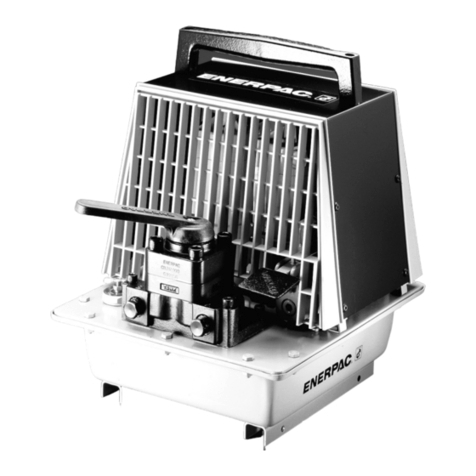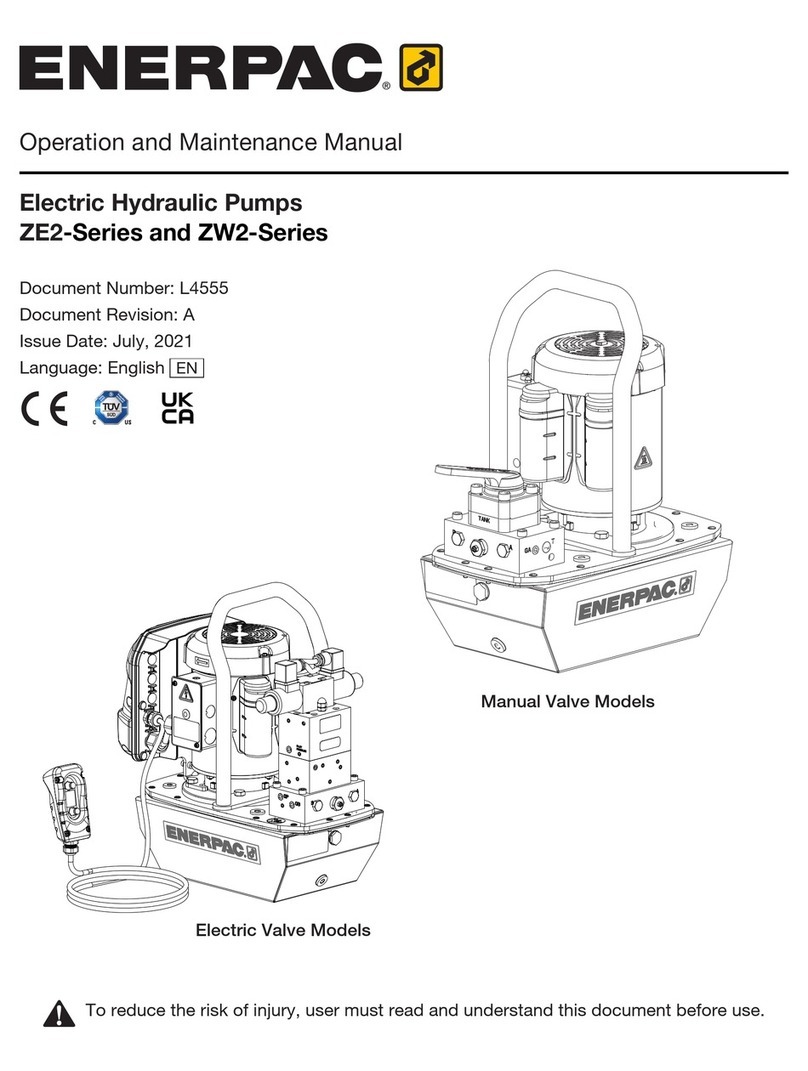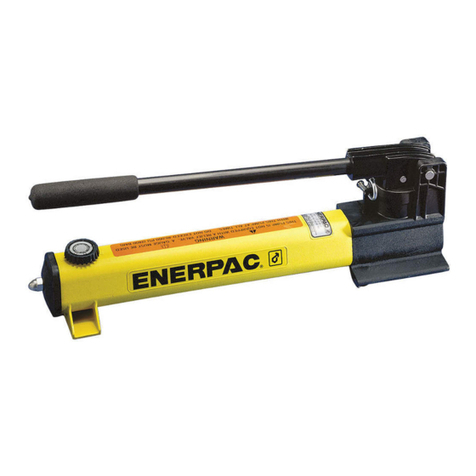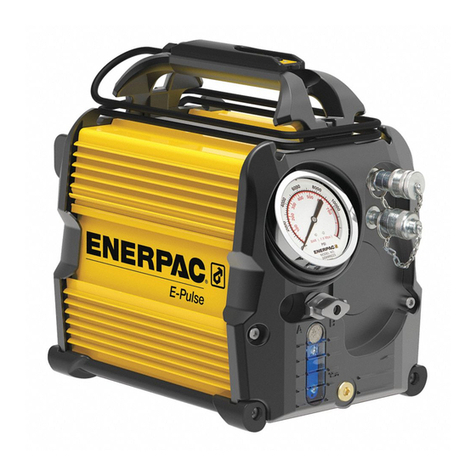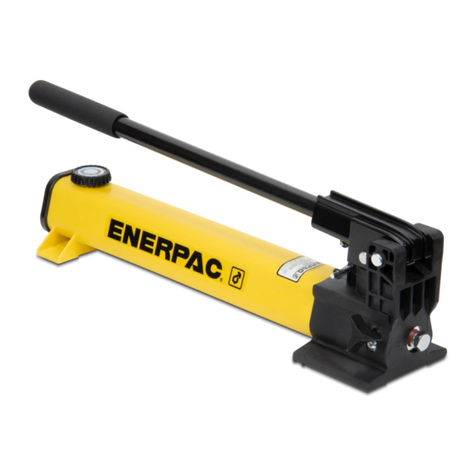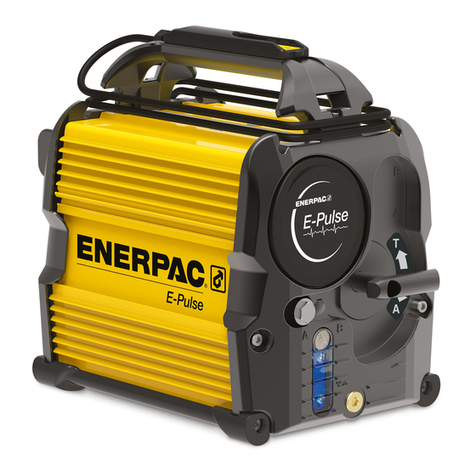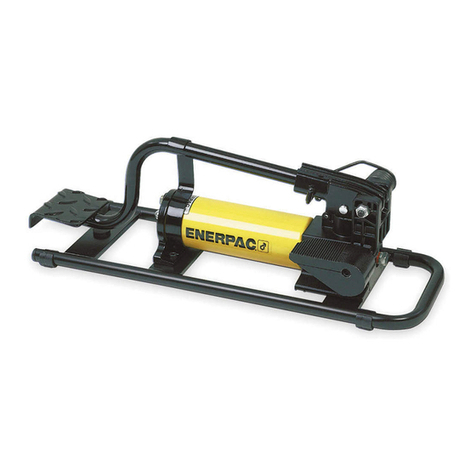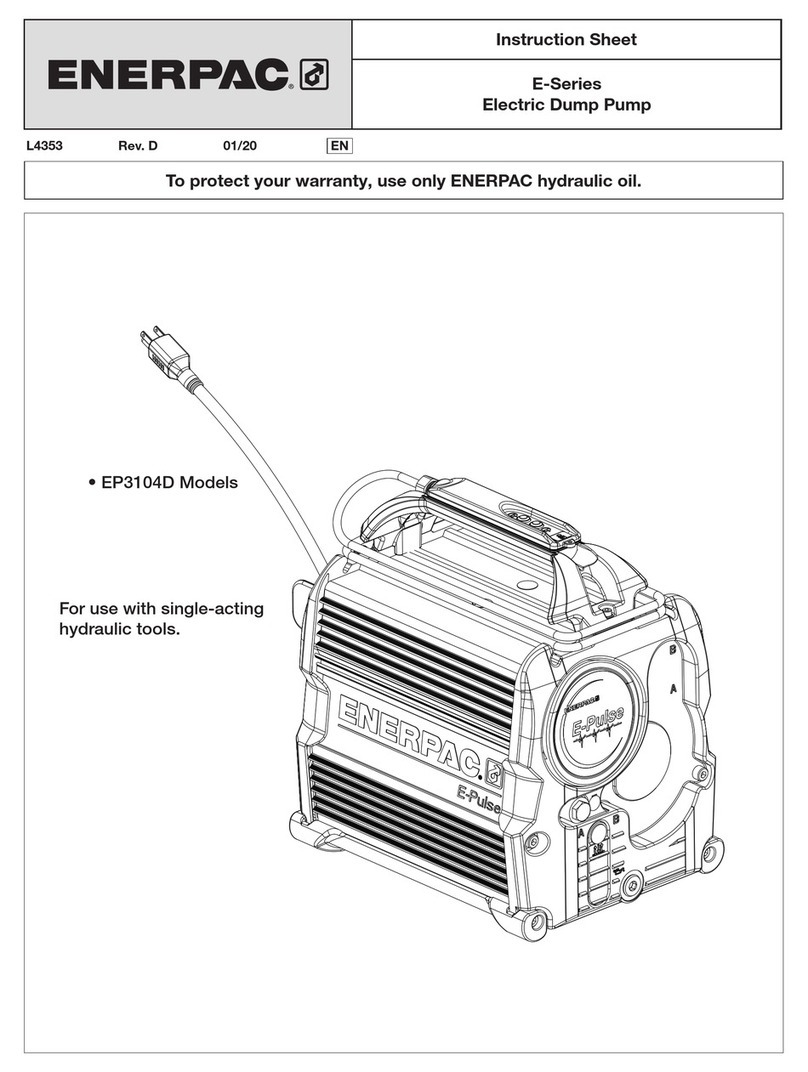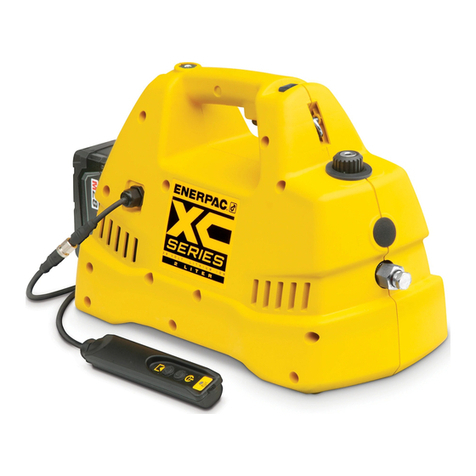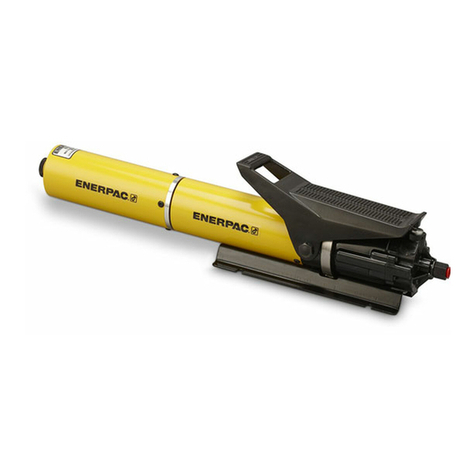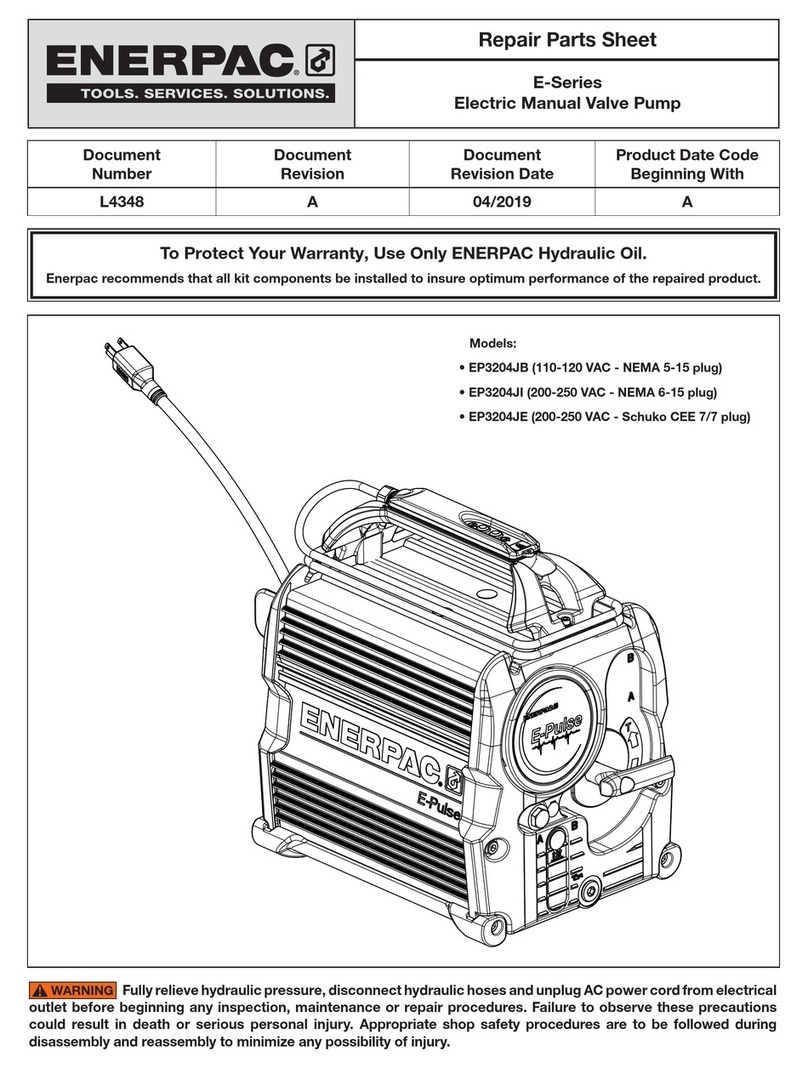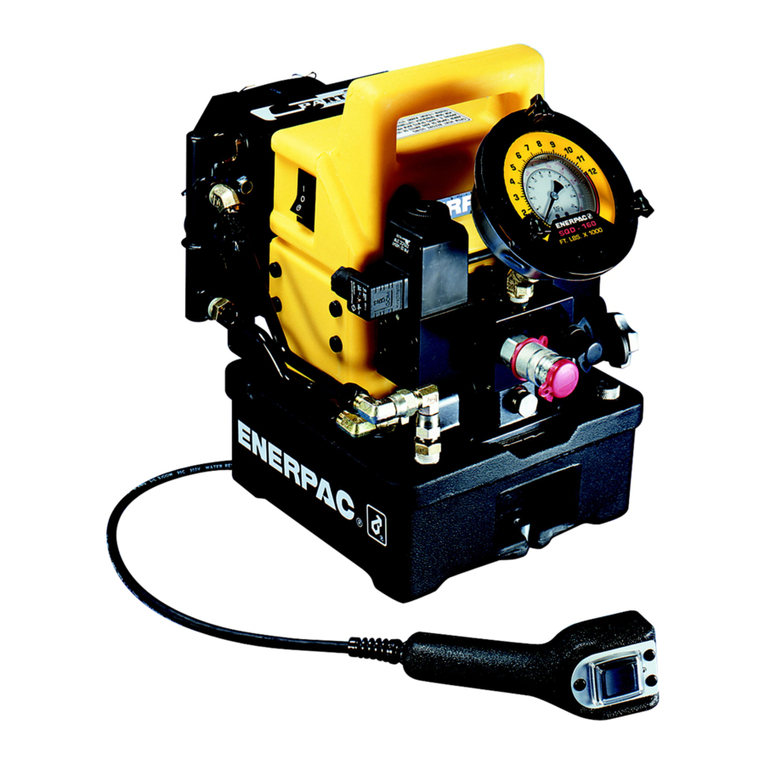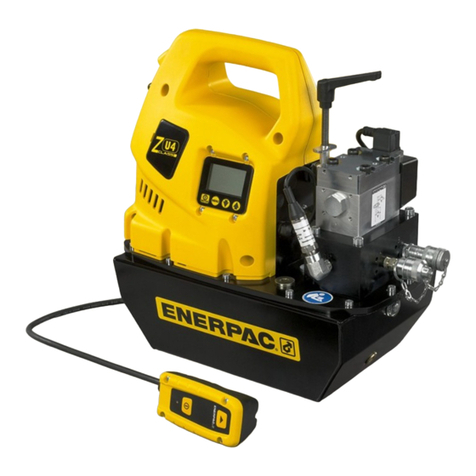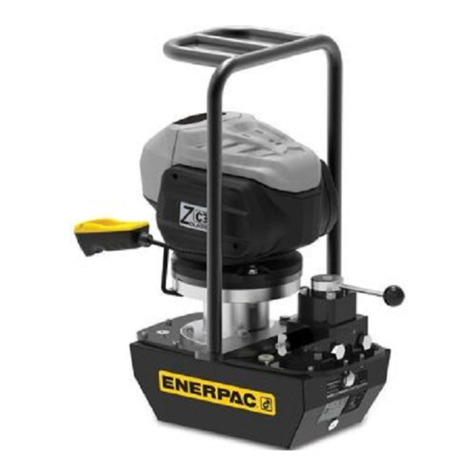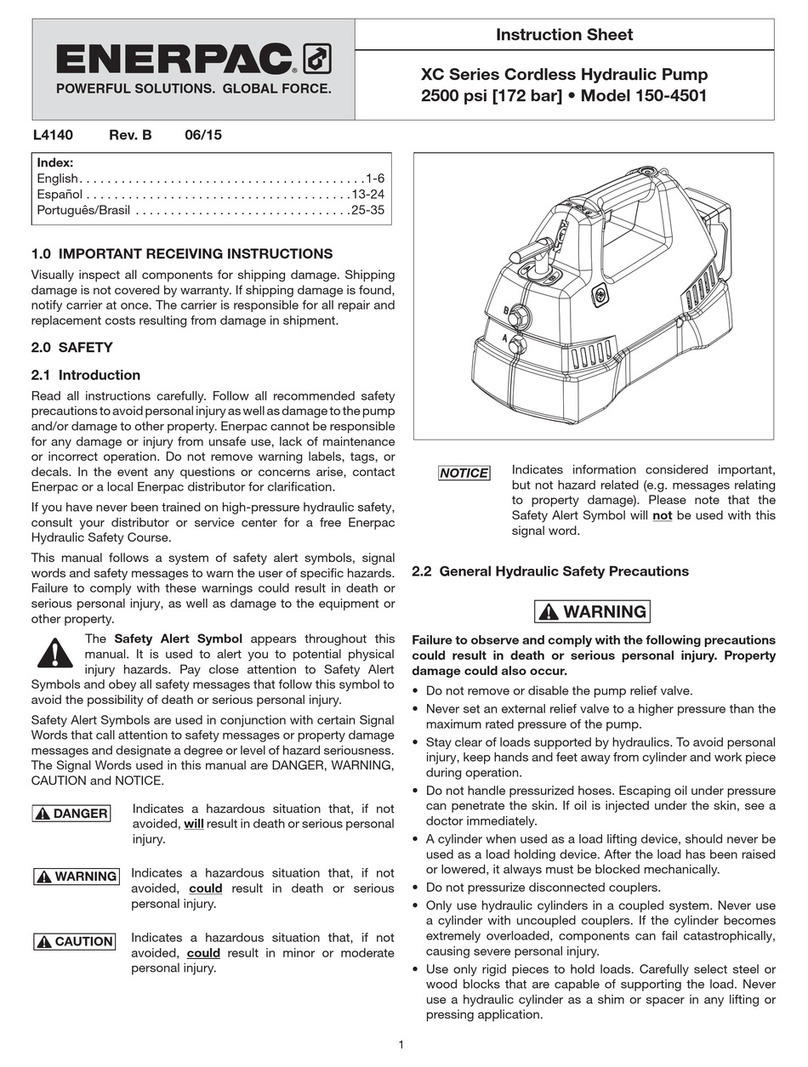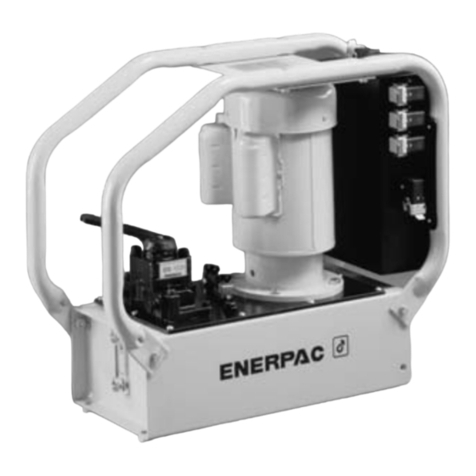
2
• Do not handle pressurized hoses. Escaping oil under
pressure can penetrate the skin. If oil is injected under the
skin, see a doctor immediately.
• Do not pressurize disconnected couplers.
• Only use hydraulic cylinders in a coupled system. Never use
a cylinder with uncoupled couplers. If the cylinder becomes
extremely overloaded, components can fail catastrophically,
causing severe personal injury.
• The pump is equipped with a hydraulic safety relief valve
that is factory preset to the pump's maximum operating
pressure. DO NOT attempt to adjust, bypass or alter
the safety relief valve. This valve is not user-adjustable.
Adjustment should be performed only by an Enerpac
Authorized Service Center.
• The system operating pressure must not exceed the pressure
rating of the lowest rated component in the system. Refer to
Section 4.1 of this manual for the maximum rated working
pressure for your pump model.
• Install pressure gauge(s) in the system to monitor operating
pressure. It is your window to see what is happening in the
system.
• Never set the pump hydraulic pressure to a higher setting
than the maximum rating of the hoses and connected
devices. The pressure setting should not exceed the setting
of the lowest rated component (pump, cylinder or other
hydraulic component) in the circuit.
• Do not exceed equipment ratings. Overloading may cause
equipment failure and possible personal injury.
• Always perform a visual inspection of the pump before
placing it into operation. If any problems are found, do not
use the pump. Have the pump repaired and tested before it
is returned to service.
• Fill the pump reservoir with hydraulic oil only to the
recommended level. Fill only when cylinders (or other
hydraulic actuators) are in their normal de-energized
position.
• Never use the pump if it is leaking oil. Do not use the pump if
it is damaged, has been altered or is in need of repair.
• Always lift the pump using only the provided lifting handles.
• Allow only trained and experienced personnel to operate the
pump.
• Be certain that hydraulic pressure is fully relieved from the
cylinder (or other hydraulic actuator) before disconnecting
hydraulic hoses, loosening hydraulic fittings, or performing
any disassembly or repair procedures.
• If hydraulic equipment is damaged, do not touch or go near
any area where high-pressure oil is spraying. Promptly stop
usage of the hydraulic equipment and replace the damaged
parts with new ones before using the equipment again.
• Do not put your hands or body in line with the face of a
disconnected coupler. If the coupler becomes pressurized
and leakage occurs, the high-pressure oil stream could
penetrate the skin.
• Skin penetration from high-pressure hydraulic oil can result
in death or serious personal injury. If oil is injected under the
skin, see a doctor immediately.
CAUTION
Failure to observe and comply with the following
precautions could result in minor or moderate personal
injury. Property damage could also occur.
• Be careful to avoid damaging hydraulic hoses. Avoid sharp
bends and kinks when routing hydraulic hoses. Do not
exceed the minimum bend radius specified by the hose
manufacturer. Using a bent or kinked hose will cause
severe back-pressure. Sharp bends and kinks will internally
damage the hose, leading to premature hose failure.
• Do not drop heavy objects on hoses. A sharp impact may
cause internal damage to hose wire strands. Applying
pressure to a damaged hose may cause it to rupture.
• Do not lift hydraulic equipment by the hoses or couplers.
• Make sure that all system components are protected from
external sources of damage, such as moving machine parts,
sharp edges and corrosive chemicals.
• Keep hydraulic equipment away from flames. Flames near
a hydraulic oil leak could cause the hydraulic oil to ignite,
resulting in a fire.
• For optimum performance, do not expose hydraulic
equipment to temperatures of 150˚F [65˚C] or higher.
Excessive heat will soften packings and seals, resulting in
possible hydraulic fluid leaks.
• Protect all hydraulic equipment from weld spatter.
• Protect the pump against rain, mud, dust, and humidity
when using it outdoors.
• Disconnect air supply hose when pump is not in use for
a prolonged period of time. NEVER remove a swivel air
connector while the air hose is pressurized.
• Immediately replace worn or damaged parts with genuine
Enerpac parts. Enerpac parts are designed to fit properly
and to withstand high loads. Non-Enerpac parts may break
or cause the product to malfunction.
• Hydraulic equipment must only be serviced by a qualified
hydraulic technician. For repair service, contact the Enerpac
Authorized Service Center in your area.
• To help ensure proper operation and best performance, use
only genuine Enerpac hydraulic oil.
2.3 General Workholding Safety Precautions
WARNING
Failure to observe and comply with the following
precautions and instructions could result in death or
serious personal injury. Property damage could also occur.
• Although hydraulic operation moves the control of the
clamping fixture to an area of greater safety, operators must
still remain alert and use common sense practises during
their work.
• Use care when selecting components for the workholding
application so that safe operation is ensured. Be certain that
all components and devices are of adequate rated capacity
to perform their intended functions.
• Verify that all appropriate safety measures have been taken
to avoid the risk of injury and property damage from your
application or system.
• Be sure that all personnel involved with operating or
servicing the workholding devices read and understand the
information contained in the manuals included with these
devices. Observe and follow all safety instructions and
precautions contained in the manuals.
• Design the control units of power operated clamping
systems to avoid inadvertent or unauthorized activation.
• Be sure that clamping cylinders and other similar workholding
devices are properly positioned before clamping forces are
applied.
• Maintain a safe distance from clamping elements and
workpiece to avoid personal injury. Stay clear of pinch
points. Keep your hands, feet and body away from the
clamping area.
• Use mechanical devices and not fingers to hold a part in
place until the clamping hydraulics are activated.
